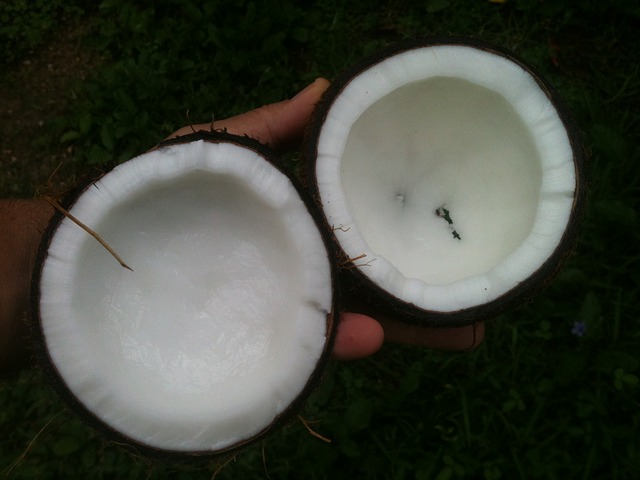There are a lot of misconceptions about dietary fat. Let’s dispel the biggest one. Dietary fat doesn’t make you fat! Essential fat-based nutrients and fatty acids like Omega-3 are essential to the health of our brain, liver, heart, and kidneys.

What’s most important is to choose oils that are stable, meaning that they don’t oxidize or burn easily. When oils oxidize, they form free radicals, which are harmful to your cells and can damage your DNA.
Examples of Healthy Dietary Fat
What are examples of healthy fats versus unhealthy fats? Canola oil is an example of unhealthy fat. And a very healthy, versatile and stable cooking fat is coconut oil.
Unfortunately, people are more familiar with using canola oil in cooking than coconut oil. But the following tips about how to use coconut oil will change that. The results of switching oils will be a reduction in inflammation as well as other health benefits.
Coconut oil is high in lauric acid, which can help balance cholesterol and has antibacterial, antifungal and antiviral properties to help get rid of unwanted bacteria and pathogens. Lastly, the healthy fat in coconut oil can help slightly boost metabolism and is better than other fats at increasing the feeling of fullness. Some studies have shown that coconut oil can even help the body burn more fat.
Coconut oil is also comprised of 90 percent saturated fat, which makes it the best choice for high heat cooking. It has a smoke point of 350 degrees Fahrenheit, which is much higher than most oils.
It can be stored on your kitchen counter without spoiling because the highly saturated fat content is not prone to oxidation. Coconut oil can also keep for a very long time without spoiling or going rancid.
Cooking Coconut Oil
Below are a few cooking tips that will help you overcome the quirks of cooking with coconut oil. Once you’re comfortable with using coconut oil you can replace other oils, butter and shortening with this miracle oil.
- Coconut oil solidifies at room temperature or colder. It will begin to liquefy at 76 degrees. Coconut oil will solidify if added to cold ingredients like eggs or milk. Bring the ingredient you want to mix with coconut oil to room temperature before you combine.
- To save money you can buy coconut oil in bulk and transfer a portion to a glass container to keep on the counter.
- One of the pitfalls of using coconut oil is that it tends to solidify. Instead of hacking at the solid oil to get a little bit out you can melt the oil and pour into a small ice cube tray and cool in the fridge. This way you can have small, 2-teaspoon portions of coconut oil pre-divided to easily throw in a pan for your cooking needs.
- You have the best chance of keeping coconut oil in easy to use the liquid or soft form by storing it next to the stovetop. The heat from the stove will gently heat the oil and keep it soft.
- You can also whip coconut oil. This will soften this fat and make it easier to use.
- You can use coconut oil for things other than cooking. For example, you can keep a jar in the bathroom as a moisturizer or cleanser.
- You can even use coconut oil to clean your mouth. The ancient practice of oil pulling requires melting a tablespoon of coconut oil and swishing it in your mouth for 20 minutes to kill bacteria in your mouth.
- Not all coconut oil is the same. Virgin coconut oil is the best kind to use because it is the cleanest, least refined and has less of a coconut taste. You may see the label “extra virgin” coconut oil on your bottle. Don’t worry, that’s the same thing as virgin oil. The addition of the word “extra” is just a marketing term.
Coconut oil is the healthy dietary fat recommended by the 21-Day Body Makeover program.

